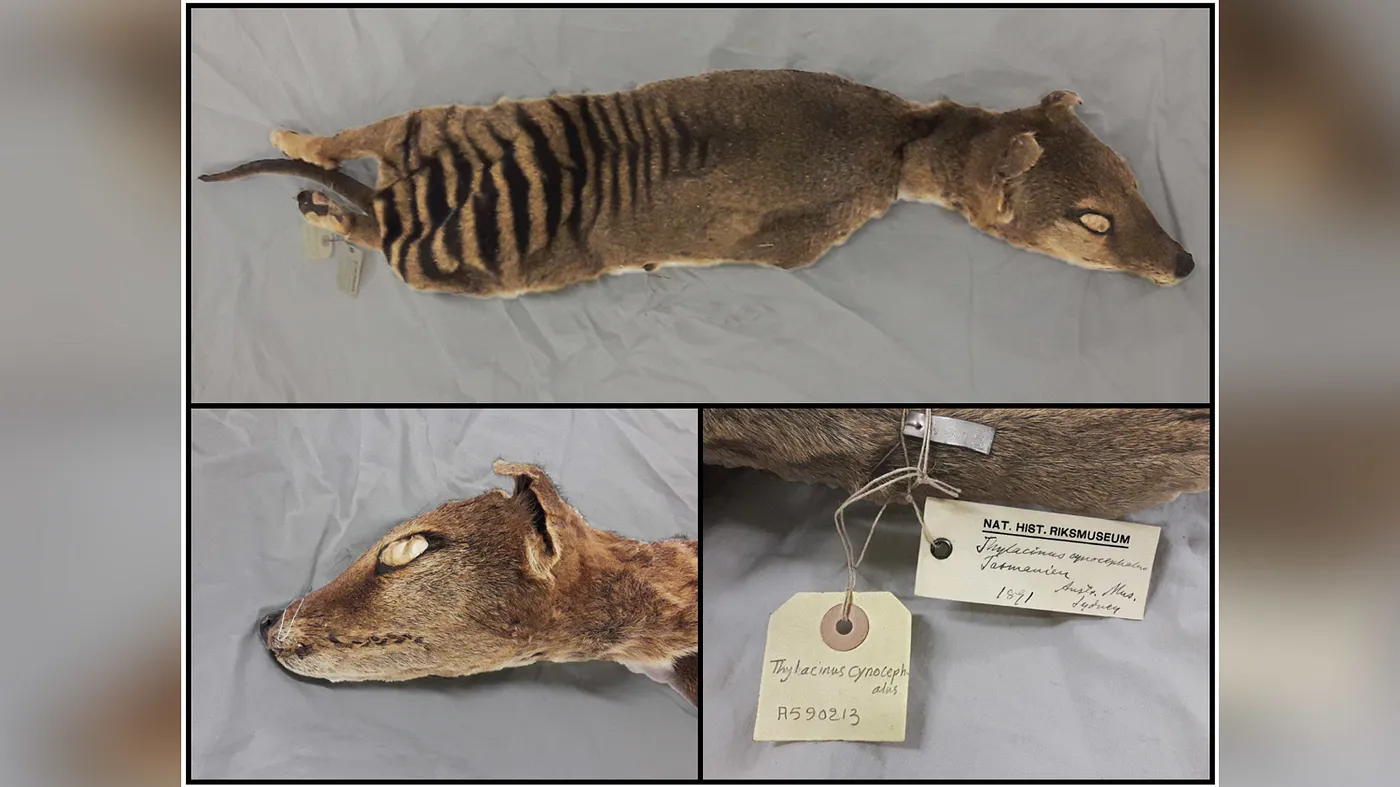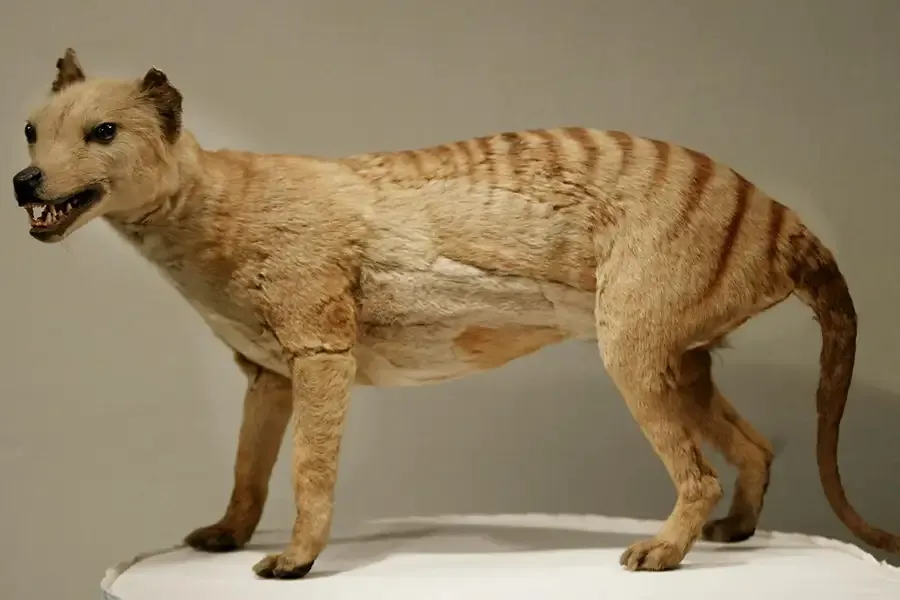The Revival of the Tasmanian Tigers
The Tasmanian tiger, an important keystone species, went extinct in 1936, leading to the decline of the Tasmanian ecosystem. However, as new technological advancements are made in the field of genetics, the Tasmanian tiger, once deemed lost forever, may find its way back to the shores of Tasmania.

Nearly 100 years ago, the Tasmanian tiger, scientifically known as Thylacinus Cynocephalus, roamed the wild land of Tasmania, Australia. These large marsupials that could weigh up to 66 pounds were top predators in the Tasmanian ecosystem.
Although the Tasmanian tigers were some of the largest carnivorous marsupials in modern times, they were surprisingly timid and often succumbed to capture without a fight. They were unfortunately hunted to extinction in 1936, causing an imbalance in the Tasmanian ecosystem.
The Tasmanian Tiger’s Role in the Ecosystem
As a creature at the top of the food chain, the Tasmanian tiger played a vital role in the Tasmanian ecosystem. As top predators, they maintained balance by controlling herbivore populations, preventing overgrazing, and promoting vegetation health. Their absence led to surges in herbivore populations, resulting in overgrazing and disrupting the food chain.
These tigers were also keystone species, or species which have a disproportionately large effect on their natural environment relative to their abundance. The void left behind in the absence of the Tasmanian tigers has disrupted relationships between surviving species.
Tasmanian tigers weren’t just carnivores; they played a crucial part in regulating small mammal populations, hence preventing future imbalances in the ecosystem. Animals like the wallabies are herbivores and eat primarily grasses and leafy plants. Following their extinction, wallaby and other small mammal populations skyrocketed, causing a ripple effect in food web.
Larger populations need more food to sustain themselves. Once the Tasmanian tigers went extinct, these herbivores overused the land to satisfy their hunger. This led to soil erosion in wild areas as plant roots were no longer present to hold the soil together. They often feed on the crops of local farmers, contributing to widespread distaste for these animals.
The Importance of the Tasmanian Tigers

Preservation of Biodiversity
Researchers have found that ecosystems experienced degradation following the extinction of the Tasmanian tiger. This resulted in the proliferation of diseases, heightened wildfire occurrences, and spread of invasive species.
According to scientific findings, the tigers played a crucial role in hunting and controlling non-native predators that posed a threat to vegetation. Now, these invasive species are spreading rapidly and outcompeting native species for resources, causing them to die off and decreasing biodiversity.
Education & Awareness
Beyond biology, the effort to bring back the Tasmanian tiger offers a unique educational opportunity. It’s a chance to understand the intricate relationships within ecosystems and emphasize the importance of conservation in preserving the delicate balance of nature. It is crucial to educate people about the effects of not preserving the environment because otherwise more and more species will succumb to extinction in the future.
Research & Innovation
The scientific pursuit of the resurrection of Tasmanian tigers involves cutting-edge research and innovation. If the resurrection of the Tasmanian tigers is successful, the knowledge gained during the process can be applied to resurrecting other extinct species. This kind of technology will allow us to maintain balance in various ecosystems by reintroducing species that will keep the populations of small animals in check.
De-Extinction of the Tasmanian Tigers

In recent years, newly discovered genetic technology has rekindled hopes of reviving the Tasmanian tiger. Possible Tasmanian tiger sightings and preserved DNA have started discussions about de-extinction and resurrection, sparking both excitement and controversy. Can science bring a species back to life? Even so, will it be worth the cost to bring them back?
Alongside genetic exploration, ecological studies are underway to comprehend the broader impacts of Thylacine extinction. How have other species adapted in their absence? What strategies can mitigate the environmental consequences of their extinction?
As scientists attempt to navigate the ethical, ecological, and practical issues surrounding de-extinction, the urgency to address the environmental impacts of extinction becomes even more apparent. Ecosystems are delicate and must be handled with care.
RNA Sequencing
In an exploration from the Genome Research Journal, researchers achieved a remarkable feat by isolating and unraveling RNA molecules from a Tasmanian tiger that lived 130 years ago. RNA, comparable to its genetic counterpart DNA, contains intricate instructions that have the potential to unveil the biological mysteries surrounding the Thylacine.
Enzymes can be used to transcribe RNA to DNA which has huge implications for cloning the Tasmanian tigers. If we are able to bring back and reintroduce these tigers to their original habitats, ecosystems in Tasmania will begin to stabilize.
Gene Editing with Crispr
In 2021, Colossal Laboratories and Biosciences ventured into the realm of resurrection, aiming to bring back the woolly mammoth using Crispr, a type of gene editing. Crispr is a fairly recent technology that research scientists use to selectively modify the DNA of living organisms for a variety of different purposes. Thus far, Crispr has made the impossible possible, starting with curing sickle cell disease.
Researchers expressed their intentions to use Crispr to resurrect the dodo bird and the Tasmanian tiger. Gene editing could potentially result in the creation of viable embryos that would allow us to reintroduce these species back into their native habitats.
Unintended Consequences
Although the gene editing and RNA sequencing methods discussed above have the potential to bring back these unique Tasmanian tigers, there are many ethical and environment concerns associated with them that must be considered. Altering the genetic makeup of a species may have unintended consequences which could end up harming ecosystems instead of helping them stabilize.
Habitat Suitability
The original habitats of the Tasmanian tiger may have undergone significant changes since their extinction. Reintroducing them without considering the current states of their previous habitats could result in challenges for the species’ survival and adaptation.
If their original habitats have since been occupied by rapidly expanding herbivore populations following the extinction of the tigers, newly reintroduced tigers may invade other species’ habitats, displacing them in the process. This has the potential to set off a chain of events in which ecosystems other than the Tasmanian tigers’ are negatively affected.
Interactions with Existing Species
The ecological dynamics of the present ecosystem have evolved since the Tasmanian tiger’s extinction in 1936. The reintroduction of a top predator to the ecosystem could disrupt interactions between existing species, potentially leading to increased competition or predation. Additionally, reintroducing an entire species will cause there to be a higher number of individuals per unit of area, increasing resource depletion.
Cloning Concerns
The ethics of cloning have been debated since the first animal was cloned back in 1996. First, cloning can be an expensive process and many don’t believe that it is worth the expense to bring back a species which died out because it wasn’t “fit” to survive.
Additionally, as gene splicing becomes a more common practice, many are concerned about the potential for the creation of a genetically “perfect” organism. It would be very difficult for these animals to be killed by disease or other animals because they would have traits that would help them survive predator attacks and disease exposure. This would allow the Tasmanian tiger’s population to grow uncontrollably, upsetting the balance in the Tasmanian ecosystem once again.
How You Can Help
Support Conservation Organizations
Donate or volunteer at organizations dedicated to the conservation of endangered species and ecosystems. We can prevent the extinction of more species by funding and helping out with these organizations’ projects. Some of these organizations include World Wide Fund for Nature, the International Rhino Foundation, and the Wildlife Conservation Society.
Educate Yourself and Others
Take it upon yourself to learn more about species that are endangered or face extinction. It is extremely important to educate yourself and others about these species so more people can contribute to and get involved in conservation efforts. The actions you take don’t need to be large to have an impact. Start small by reposting a donation platform on social media or having a conversation at the dinner table with family.
Report Sightings
If you come across any rare or endangered species, report your sightings to relevant authorities or conservation organizations. In some cases, a couple of individuals are still alive when a species is declared extinct. If sightings of these individuals are reported, environmentalists can help those few animals reproduce and repopulate.
Recap
The Tasmanian tiger, an important keystone species, went extinct in 1936, leading to the decline of the Tasmanian ecosystem. However, as new technological advancements are made in the field of genetics, the Tasmanian tiger, once deemed lost forever, may find its way back to the shores of Tasmania. These tigers have the potential to restore balance to the ecosystem that was disrupted when they went extinct by checking growing herbivore populations. Awareness is essential because the futures of the Tasmanian tiger and countless other species are in our hands.
